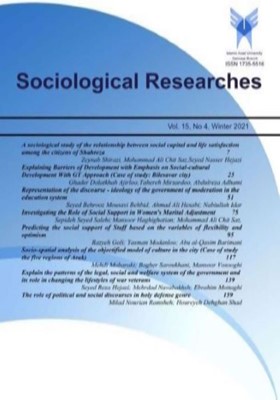Socio-spatial analysis of the objectified model of culture in the city (Case of study the five regions of Arak)
Subject Areas :Mehdi Mobaraki 1 , Bagher Saroukhani 2 , Mansoor Vosooghi 3
1 - PhD Student of Cultural Sociology, Sciences& Researches Branch, Islamic Azad University, Tehran, Iran
2 - Professor of sociological Department, Sciences& Researches Branch, Islamic Azad University, Tehran, Iran. (Corresponding Author): b.saroukhani@yahoo.com
3 - Professor of Department of Sociology, Sciences& Researches Branch, Islamic Azad University, Tehran, Iran
Keywords: public interest, شعاع دسترسی, Cultural Needs, برنامهریزی فرهنگیشهر, توزیع امکانات فرهنگی, تقاضا فرهنگی, cultural planning of the city, radius of access,
Abstract :
In this article, the city is considered as a communication and social organization for the production of culture in a socio-spatial context. In the analysis of this organization (production, distribution and consumption), the culture of cultural consumption is examined Issues such as urban development measures include policy-making, planning and implementation in the allocation and distribution of cultural facilities in order to understand the pattern of cultural justice in the city. In this article, the city is considered as a communication and social organization for the production of culture in a socio-spatial context. In the analysis of this organization (production, distribution and consumption), in order to understand the pattern of cultural justice, cultural consumption is examined. Issues such as urban development measures include policy-making, planning and implementation in the allocation and distribution of cultural facilities in order to understand the pattern of cultural justice in the city. The method of this study was a combination that in the quantitative part, data collection was done with a questionnaire and sampling method appropriate to the volume. In the quantitative part, information related to physical studies was performed with secondary analysis and then location. According to the results, the spatial distribution of culture in Arak is inefficient and unequal and faces serious shortcomings in the urban planning system in Arak in the regions and among residents.
_||_


